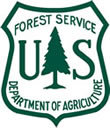The Role of Channel Instability on the Storage and Release of Seeds for Tree Biodiversity
Riparian zones, as interfaces between terrestrial and aquatic ecosystems, are some of the most diverse, complex, and dynamic habitats on the terrestrial Earth and are particularly sensitive to environmental change (Gregory et al., 1991; Malanson, 1993; Naiman et al., 1993; Naiman et al., 1997). One factor that contributes to high plant species diversity in riparian zones is periodic disturbances, particularly flood events (Wissmar and Swanson, 1990; Gregory et al., 1991; Naiman and Decamps, 1997; Pollock et al., 1998). However, this same type of disturbance is thought to facilitate invasive plant species establishment in these habitats (Stohlgren et al., 1998; Hood and Naiman, 2000). Invasive plant species can threaten biodiversity (Dukes and Mooney, 1999; Chapin et al., 2000), potentially impacting the productivity and stability of the ecosystem (Tilman, 2000).
Climate change is predicted to alter dominant patterns of precipitation and run-off which presents a threat to the structure and function of riparian zones (Meyer et al., 1999; Poff et al., 2002). Studies have shown that elevated atmospheric CO2 leads to a relative decline in native species biomass and a simultaneous increase in the biomass of invasive species, because elevated CO2 enhanced the productivity of invasive species (Dukes, 2002; Housman et al., 2006). Models have been constructed that explore the impact of potential changes in hydrology due to climate change, on the environment (Syvitski and Andrews, 1994; Shrestha et al., 2012). However, studies examining how changes in the hydrologic regime due to climate change, may impact the seed bank within the riparian zone have not been identified. Furthermore, few or no studies have been identified that evaluate differential responses of native and invasive species seeds to damage from disturbances, such as abrasion from suspended sediment.
The aim of this research is to examine potential changes in native and invasive vegetation along the Little Tennessee River in North Carolina as a result of predicted changes in the hydrologic regime and channel instability due to climate change.
work cited • poster presentation
Mentored Students
- Joe Montoya - poster presentation
- Christopher Perkes - poster presentation










